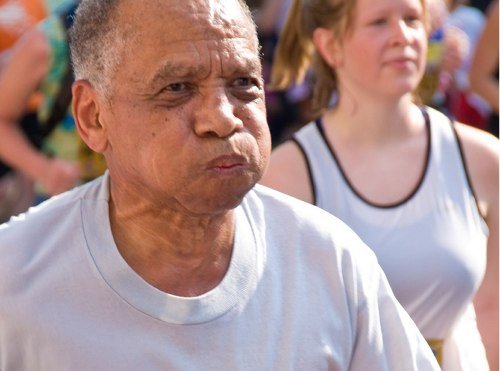Inhale through the nose, exhale through the mouth — right? Right, but not always. Breathing plays an important role in sports, because if you breathe incorrectly, you lose oxygen, and therefore strength. My fitness coach repeats over and over again at every class, like a mantra: "Don't forget to breathe! Exhale through the mouth!". For those exercises that we perform at this time, this is correct. But such a rhythm is absolutely not suitable for, for example, running or yoga.
Each class has its own rhythm and depth of breathing, which fills our lungs with oxygen, and the body with the energy necessary for training.

So, inhale for "one", exhale for "two-three-four"?
Recent studies have shown that proper breathing technique has a positive effect on speed and performance. So the chances of reaching the finish line first increase if you breathe properly.
There is no "golden rule" that would be perfect for all runners. Alison McConnell, a breathing expert and author of the book "Breathe Strong Perform Better" ("Breathe harder, work better"), says that many prefer the option "two kicks — one breath." That is, one breath for two steps and one exit for two steps is a 2:2 rhythm.McConnell also recommends breathing through the mouth, as breathing through the nose during running training is difficult. Some disagree with her and give their arguments in favor of breathing through the nose. Dr. Roy Sugerman believes that breathing through the nose increases the concentration of CO2 in the blood, which creates a calming effect. In addition, breathing through the nose in cold weather warms the cold air and reduces the likelihood of catching a cold, as well as reduces the number of allergens that enter the body with inhalation.
Therefore, you can try to breathe through your nose and through your mouth and choose the option that is easiest to run with. If you still breathe through your mouth, in cold weather, you need to slightly lift your tongue to the sky during inhalation: thus, cold air will not immediately enter the throat.
The rhythm of breathing during active team games, such as football or basketball, is very different from the measured rhythm during running, which you choose for yourself. During these games, you not only move jerkily, but also get a decent dose of adrenaline, which makes your heart pound wildly, which, in turn, affects breathing.
McConnell says that the muscles with which we inhale and exhale are an integral part of the basic stabilizing and postural control system. This means that you intuitively take a deep breath and strain your body when you expect a blow or a heavy load. This not only helps to resist, but also protects the spine.
While running on the field, you should breathe through the diaphragm (the most effective muscle for breathing), and not with your chest. Your chest should move from the bottom up, from the back to the chest and to the sides, says physiotherapist Anna Hartman. In addition, deeper breathing calms down, gives the necessary fuel for the muscles and, accordingly, an advantage over rivals.
Proper breathing is important not only for aerobic exercise. Anyone who has done weight lifting exercises at least once knows that if you breathe incorrectly or hold your breath at all, you run out of strength very quickly.
It is standard to take one breath per effort, and then exhale. This rhythm helps the body to get ready before working with weights and to insure the lumbar spine. How to breathe during the bench press? Deep and prolonged exhalation while lifting the load, then inhale in the upper position or when lowering the weight to the chest. Remember that when the weight is lifted, it does not disappear anywhere and the body needs to be kept in constant tension. This mechanism is a bit like the one that turns on during contact sports, and it is an insurance for your spine.
And don't forget to exhale! Holding your breath increases the pressure in your chest. This is good for keeping a stable position, but if you don't breathe for too long, blood flow to the heart will decrease, which can lead to an increase in blood pressure.
During FT classes, our standard breathing mode is inhaling on the chest press and exhaling on the chest press. Moreover, inhaling and exhaling are done as long as the bench press lasts.
It's time to relax and do yoga. Breathing plays a very important role in yoga classes. Everything is tied to him. There are several ways to relax with breathing.
1. Sama Vritti or "equal breathing". This is breathing, during which the inhalation is equal in duration to the exhalation. This style of breathing calms the nervous system, lowers blood pressure and removes stress.
2. Ujjayi (victorious spirit). During this breathing, you will make a slightly hissing sound (almost like Darth Vader). During this breathing, you inhale and exhale through your nose, while slightly squeezing your throat.
What should not be done? When it comes to poses in which it is difficult to maintain balance or stand for a long time, we usually start holding our breath. This should not be done in any case. Just take it as a sign of your fatigue and take a short break.
There are a huge number of different breathing practices in yoga and if you choose a good instructor, he will definitely tell you how to do it correctly. Just remember that it is impossible to hold your breath while doing exercises, unless the coach says so.
I hope that this short review will help you achieve better results in training and point out weaknesses. This is especially true for running, since it very often happens that the legs would still run and run, but breathing no longer allows.